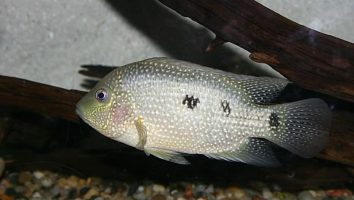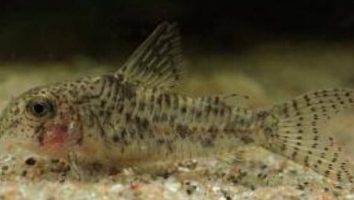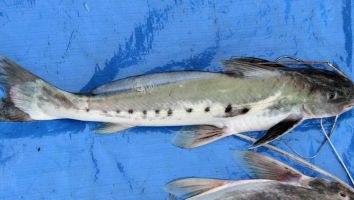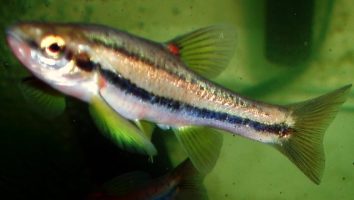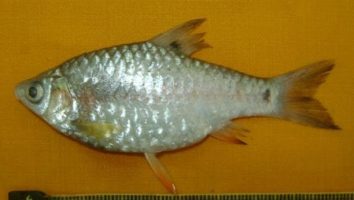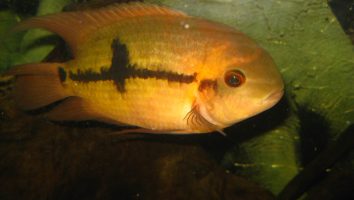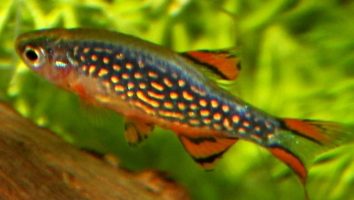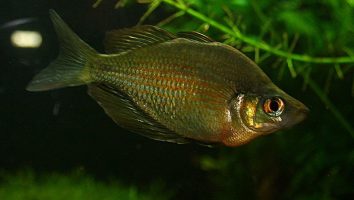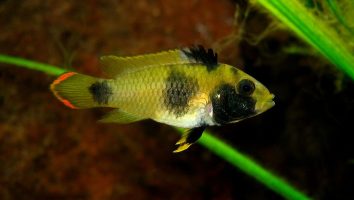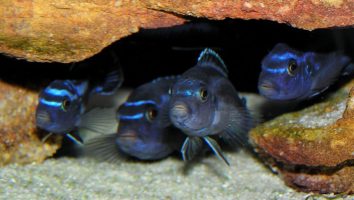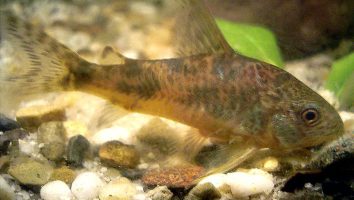The Volcano rasbora is a stunning little freshwater fish that’s perfect for beginner aquarists.
This species is relatively easy to care for and very peaceful, making them a great addition to any community tank.
They’re also very active and love to swim, so they’re a great choice if you want a lively aquarium.
In this guide, we’ll teach you everything you need to know about Volcano rasbora care. You’ll learn about their diet, tank mates, lifespan, and more!
Table of contents
Species overview
The volcano rasbora (scientific name: Boraras brigittae) is a small freshwater fish that’s native to various parts of Southeast Asia.
They are most commonly found in Indonesia, Malaysia, and Thailand.
These fish prefer slow-moving water with a lot of vegetation. This could be in the form of live plants, driftwood, or even just a lot of leaves.
The volcano rasbora is a very peaceful fish that does well in community tanks. They are compatible with a wide variety of tank mates and make a great addition to most nano aquariums.
The main draw of the volcano rasbora is its unique coloration. These fish are red with black spots, which makes them stand out in any setting.
Appearance

The Volcano rasbora is one of the most unique looking fish in the freshwater world. They have a very “fiery” appearance that really makes them stand out in a tank.
The body of the fish is long, thin, and torpedo-shaped. The vast majority of their body is a deep crimson color. This coloration starts at the top of their head and runs all the way down to their tail.
There is a very thin black line that starts at the base of their pectoral fins and runs along their sides. This line gets thicker as it approaches their tail fin.
The fins on this fish are all relatively small when compared to the rest of their body. The dorsal and anal fins are both short and thin. Their caudal fin is forked and slightly taller than their dorsal fin.
The pectoral fins are thin and start about two-thirds of the way back on the body.
Volcano rasboras have large eyes that sit high on their heads. They also have a very small mouth that’s downturned ever so slightly.
Lifespan
Volcano rasboras have a lifespan of 3-5 years in captivity. This is a relatively short lifespan when compared to other fish, but it’s still a good amount of time to enjoy these little beauties.
As with any fish, there are a number of factors that will impact their lifespan. Poor water quality, stress from bad tank mates, or a suboptimal diet can all lead to a shortened lifespan.
Size
The average size of a Volcano rasbora is about 1.5 inches when fully grown.
Tank
Tank Size
The minimum tank size for Volcano rasboras is 10 gallons. If you’re looking for a freshwater fish that can fit in an average-sized tank, this is a good option.
Volcano rasboras are a schooling fish so you should keep them in a group of at least 5 or 6 fish. If you want to keep a larger school, you’ll need a larger tank. We recommend at least 20 gallons if you want to keep a school of 10 fish.
Water Parameters
The Volcano rasbora (Boraras brigittae) is a freshwater fish that is native to Indonesia.
This species is found in slow moving waters with a sandy substrate and plenty of leaf litter. The water is typically soft with a slightly acidic pH.
In the aquarium, you should replicate these conditions as closely as possible.
- Water Temperature: 75-82 degrees Fahrenheit
- pH Levels: 6.0-7.0
- Water hardness: 0-8 dGH
- Alkalinity Levels: 0-5 dKH
What To Put In Their Tank
For the most part, you can house these fish in a pretty standard freshwater setup.
Aquariums that are at least 20 gallons in size are a good starting point. From there you can go with a gravel substrate and a few rocks or driftwood to help decorate the inside of their tank.
As for plants, you have a few different options. These fish are known to nibble on soft plants (like Java Moss), but they usually don’t do too much damage.
If you want to go with something a little more robust then you can go with something like Hornwort or Water Wisteria.
One important thing to remember is that these fish like to school. That means you’ll need to have at least six of them in your tank. If you can manage more then that’s even better!
Common Diseases
The volcano rasbora is a hardy fish that doesn’t get sick very often. However, that’s not to say that they’re immune to disease.
There are a few potential illnesses that your volcano rasbora could contract. The most common is ich, which is a parasite that can cause a lot of problems if it’s not treated quickly.
Other potential diseases include bacterial infections, fungal infections, and parasites. As with ich, these illnesses can be quite serious if they’re not treated in a timely manner.
The best way to prevent your fish from getting sick is to maintain a clean and stable environment. This means regular water changes, filtration, and vacuuming of the substrate.
It’s also important to quarantine new fish before adding them to your tank. This will help to ensure that any potential illnesses are caught early and can be treated before they have a chance to affect your other fish.
Behavior & Temperament
The volcano rasbora is a schooling fish, so it’s best kept in groups of six or more. They’re relatively peaceful fish and won’t bother other tank mates. In fact, they often get along quite well with other small fish.
These rasboras are active fish that enjoy swimming around. They’re not the type of fish that will spend all day hiding in one spot. You’ll often see them near the top of the tank where they can swim freely.
One interesting thing to note about the volcano rasbora is that it’s not afraid of light. Most fish prefer to stay in dark or dimly lit areas, but this rasbora is happy to swim in well-lit tanks.
Tank Mates
The volcano rasbora is a peaceful fish that does well in a community tank. These fish are native to clear streams in Southeast Asia, so they’re accustomed to living in groups.
In the wild, volcano rasboras form large schools of hundreds of fish. While you probably won’t have quite that many in your aquarium, you should still aim for a group of at least six.
A larger group will help these fish feel more comfortable and secure in their environment. It will also make them less likely to pick on tank mates.
When choosing volcano rasbora tank mates, look for other peaceful fish that occupy different areas of the tank. These fish are mid-water dwellers, so bottom-dwellers and top-dwellers make good choices.
Some compatible volcano rasbora tank mates include:
- Corydoras Catfish
- Otocinclus Catfish
- Dwarf Gouramis
- Tetras
- Guppies
- Mollies
Breeding
The volcano rasbora is a beautiful, peaceful fish that is easy to care for. They are good community fish and make a great addition to any aquarium. They are also easy to breed in captivity.
To set up a breeding tank, start with a 20 gallon tank. The water should be between 75 and 80 degrees Fahrenheit. The pH should be between 6.8 and 7.2. The tank should be well-planted with plenty of hiding places.
When ready to breed, add two females for every male. The fish will spawn in the morning. The female will lay around 200 eggs which the male will fertilize.
The eggs will hatch in 24 to 48 hours. The fry will be free-swimming in about a week. They can be fed baby brine shrimp or other small live foods.
Conclusion
The Volcano rasbora is a great fish for the beginner aquarist. They’re easy to care for and don’t require a lot of special attention.
They’re also a very peaceful fish, so they’re perfect for community tanks.
If you’re looking for a hardy fish that will add some color to your tank, the Volcano rasbora is a great choice!

